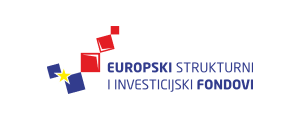First Data from the Rare Disease Database Presented
Croatian Alliance for Rare Diseases held a press conference on the „Universal Health Coverage Day”, predstavio je prve kvantitativne podatke o rijetkim bolestima na uzorku od 860 osoba. Riječ je o podacima koji prikazuju sociodemografske karakteristike te zdravstveni i socijalni profil osoba s rijetkim bolestima. Prikazani su podaci o ostvarivanju prava unutar zdravstvenog i socijalnog sustava. Cilj je da ove informacije postanu temelj za poduzimanje potrebnih iskoraka u području pružanja cjelokupne skrbi. Ovi podaci prikupljeni su u godinu dana, a u narednih nekoliko godina cilj je unijeti što veći broj pacijenata s rijetkim bolestima.
Structure and Function of the Database
The database consists of 57 predefined questions, enabling the extraction and correlation of various statistical parameters. This software allows for quick and accurate information retrieval, with questions and predefined answers aligned with current healthcare and social system methodologies.
Key Findings
According to the initial data, the most critical areas requiring action are finding solutions for the high percentage of unemployed individuals with rare diseases and conducting a further analysis of the employment status of parents of children with rare diseases. Regarding children, the emphasis is on the importance of investing in specialized education, as half of the children with rare diseases of preschool and school age are unable to attend regular educational institutions.
Potrebno je dodatno utvrditi zašto velik broj pacijenata s rijetkim bolestima ima redovite troškove na farmakološku terapiju, zdravstvene usluge i medicinska pomagala koja su im potrebna uz rijetke dijagnoze. Za najveći broj rijetkih bolesti ne postoji lijek i ovo su jedini načini držanja bolesti pod kontrolom i sprečavanje daljnje progresije, stoga je potrebno naći rješenja da se osobama s rijetkim bolestima pruži adekvatna skrb.
The Rare Disease Database has both operational and strategic value. In the operational work of the Alliance, the database will enable efficient use of large volumes of data. In daily practice, inquiries about rare diseases frequently come from healthcare professionals, social workers, students, local and national institutions, patient organizations from Croatia and abroad, business partners, academics, the media, and patients themselves. These inquiries are most often related to quantitative data, which will now be easily searchable based on specific needs.
First Step Toward a New National Program
The Rare Disease Database represents a crucial first step, not only in the systematization of data but also as a comprehensive analysis of the rare disease landscape, which has not existed until now. This analysis is expected to become a key tool for planning and preparing a new National Rare Disease Program and making policy decisions regarding the organization of healthcare and social protection for those affected. The current National Rare Disease Program (2015–2020) was developed based on European guidelines and recommendations, without an in-depth analysis of the situation in Croatia. Many of its set indicators were not achieved, highlighting the need for a new program. A new National Rare Disease Program is expected to be developed, and the Rare Disease Database will play a central role in analyzing the current situation. This data will be further refined in collaboration with institutional representatives to address newly identified needs. Beyond supporting the new national program, the database will also be valuable in identifying needs for European project applications, helping secure additional resources for rare disease care.
